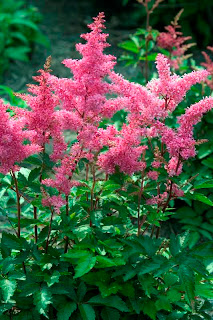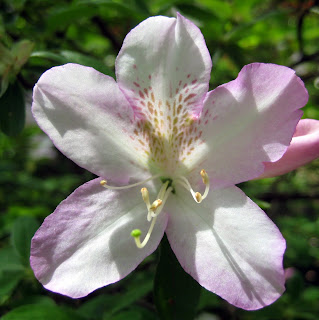 |
| 'Red Sentinel' Courtesy Missouri Botanical Garden PlantFinder |
Scientific name: Astilbe japonica, Astilbe chinensis, Astilbe thunbergii, others and hybrids
Common name(s): False spireaHeight x Width: 12-36" (though some ultra-dwarf varieties, like astilbe crispa 'lilliput' can be as short as 6-8")
Growth rate: Unknown
Hardiness: Zones 4-8
Soil: Can grow in average soil, but prefers moist organically rich soils
Light: Partial shade to full shade
 |
| 'Rheinland' Courtesy Missouri Botanical Garden PlantFinder |
- grows well in shade
- provides late spring/early summer color, right now it seems as if everything will be done blooming by early summer
- is drought tolerant once established
- fresh green fern-like foliage remains crisp all season and can act as a groundcover
- as leaves emerge in the spring, they can hide the dying foliage of daffodils and other spring bulbs
Where would I put it?
- In the backyard, in a damp spot that will become a rain garden or anywhere between the understory and the lawn
- I would put 'Rheinland' or 'Deutschland' in a bed with toad lily and a purple lobelia
- I would put 'Red Sentinel' in a bed with red lobelia and foamflower
- I would put either 'Sprite' or 'Lilliput' in a bed with hostas and annual impatiens
 |
| 'Deutschland' Courtesy Missouri Botanical Garden PlantFinder |
Astilbe, or false spirea, seems to be a requirement for every shade garden. I've tried to grow it before, but the spot was a little sunny and could have been too dry, so the plant didn't do much over the course of two years. Everything I had read about woodland gardens recommends them, so I'm going to try again, even if they're not a native plant.
Have you tried astilbe? What is your favorite variety?





































